10 Sand driving tips
Beach driving has to be one of the best things about owning a 4X4, I reckon. You don’t need the latest and greatest mods on your vehicle – most stock four-wheel drives are more than capable of driving on sand.…
Beach driving has to be one of the best things about owning a 4X4, I reckon. You don’t need the latest and greatest mods on your vehicle – most stock four-wheel drives are more than capable of driving on sand. Nor do you have to travel too far from most capital cities to find your own slice of coastal camping paradise. And let’s not forget that over 1.5 million square kilometres of our country is classified as desert. So sand driving is a big part of how we go off-road as a nation.
When done correctly, sand driving is relatively easy on your driveline. So the chance of breakages ruining an otherwise fun trip is greatly reduced, if you follow these 10 sand driving tips. However it is not without its pitfalls. There’s more to it than locking the stubby lever in and standing on the loud pedal. With that in mind we thought we’d throw together a few sand driving tips. They’ll see you hitting the soft stuff with confidence.
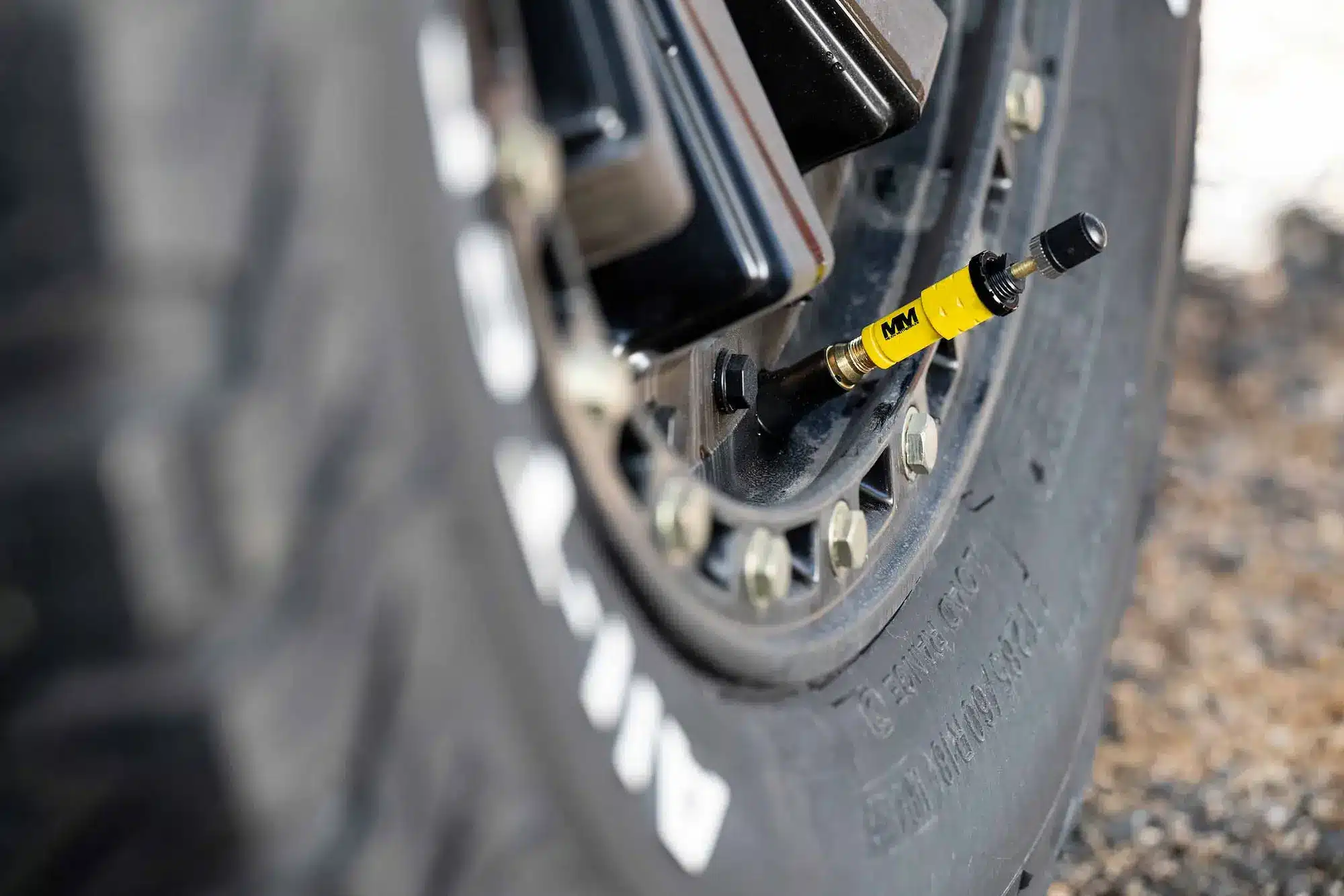
When you’re on the sand, tyre pressures are arguably the largest factor in ensuring you make it through. It’s impossible to tell you which pressure to run though. There are several variables that are dependent on individual vehicles. Weights, tyre sizes and even vehicle types all play significant roles in determining your pressures. Sand as a terrain is also constantly shifting and can have different densities. Down near the water it’ll be firmer and easier to drive on. Whereas up in the sand dunes the drier sand will be much softer. Particularly if the area you’re in hasn’t seen rain for a while. Reducing tyre pressure increases the footprint of the tyres, allowing better traction on sand. This is crucial for navigating these varying conditions.
As a rule of thumb, if you’re driving a full-size 4X4 wagon, start at around the 20 psi mark. Head south from there depending on conditions. Don’t go lower than 16 psi as you’re starting to run the risk of rolling the tyre bead off the rim below these pressures. More on that later. With that said, if you’re below the high tide mark and you get stuck, it may be worth dumping more air to try and get out. It may be a pain to pump them back up, so choose your moment. Just make sure you air back up to a safer pressure as soon as you can.
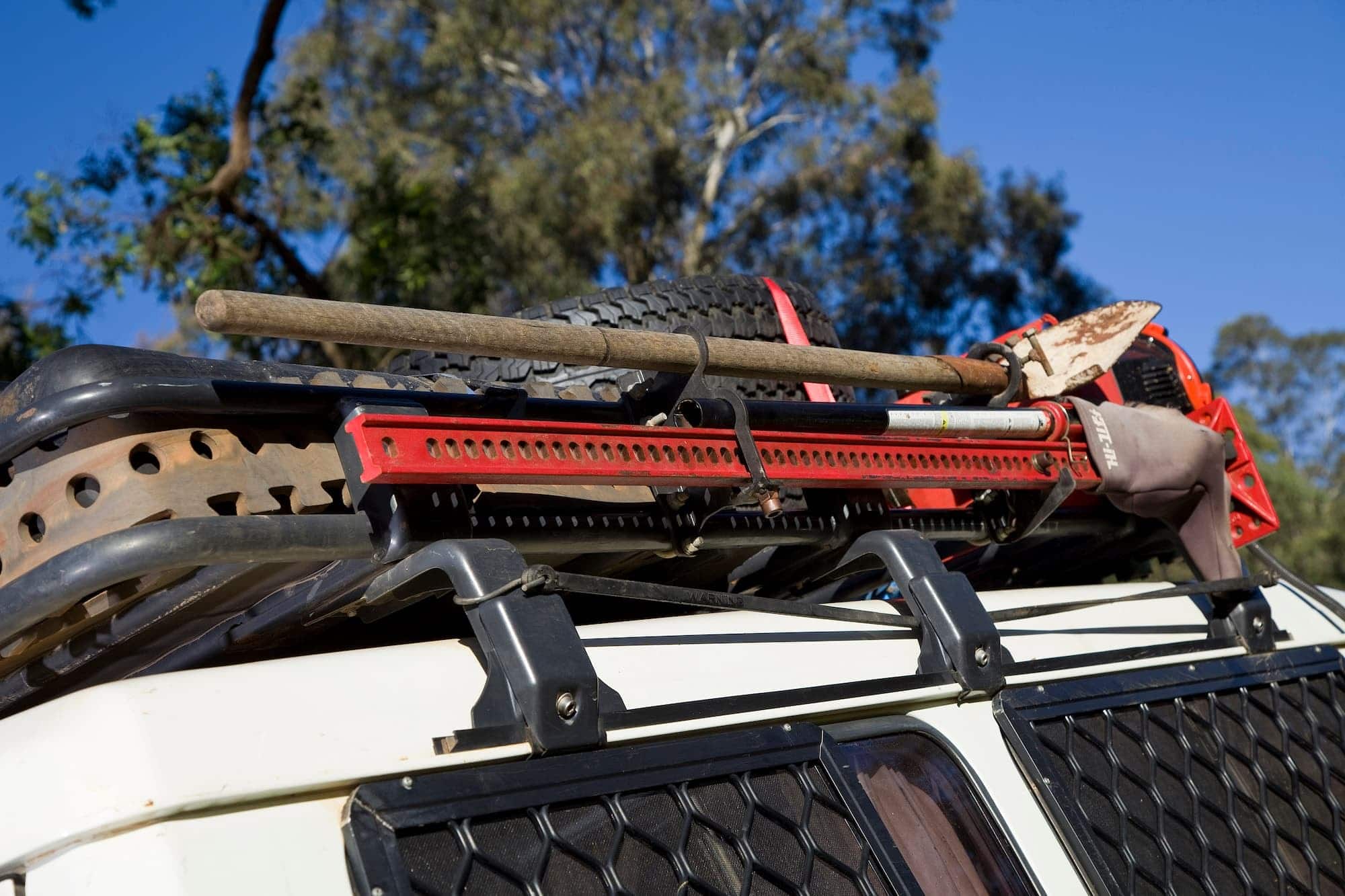
Sooner or later you’re going to get bogged on the sand. Don’t feel bad, it happens to the best of us – it’s simply the price of entry into the world of sand driving. First thing to do is to stop trying to drive out of it. You’re only going to dig yourself in deeper. Second thing is to try reversing out. Your tyres effectively created a ramp into the hole that you’re bogged in. More often than not you can back right up it. If that doesn’t work, you could try dumping more air. But you’ll have to pump them back up later, so if time is not a factor, break out the shovel. The aim is to dig yourself a ramp out of the hole you’re in, and it’s pretty much guaranteed to work.
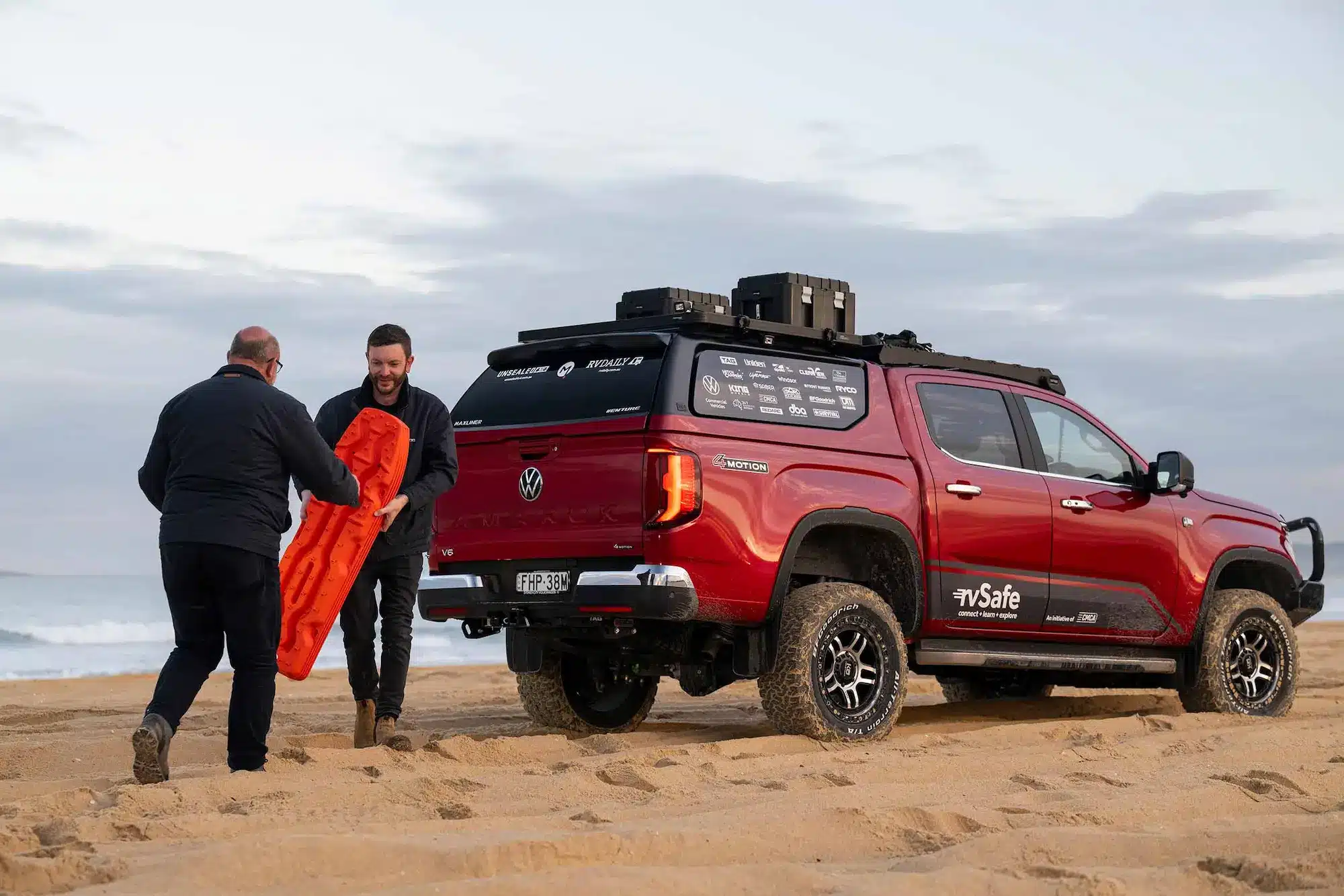
If traction aids are in your recovery kit, they’ll pay for themselves when you’re stuck on the beach. Simply use them to dig the sand out from in front of your tyres and wedge them down under your wheels. Then a gentle acceleration and presto—you’re free. While traction aids are a worthwhile thing to have in all sorts of terrains, they’re at their most useful in the desert or cruising over some beach dunes.
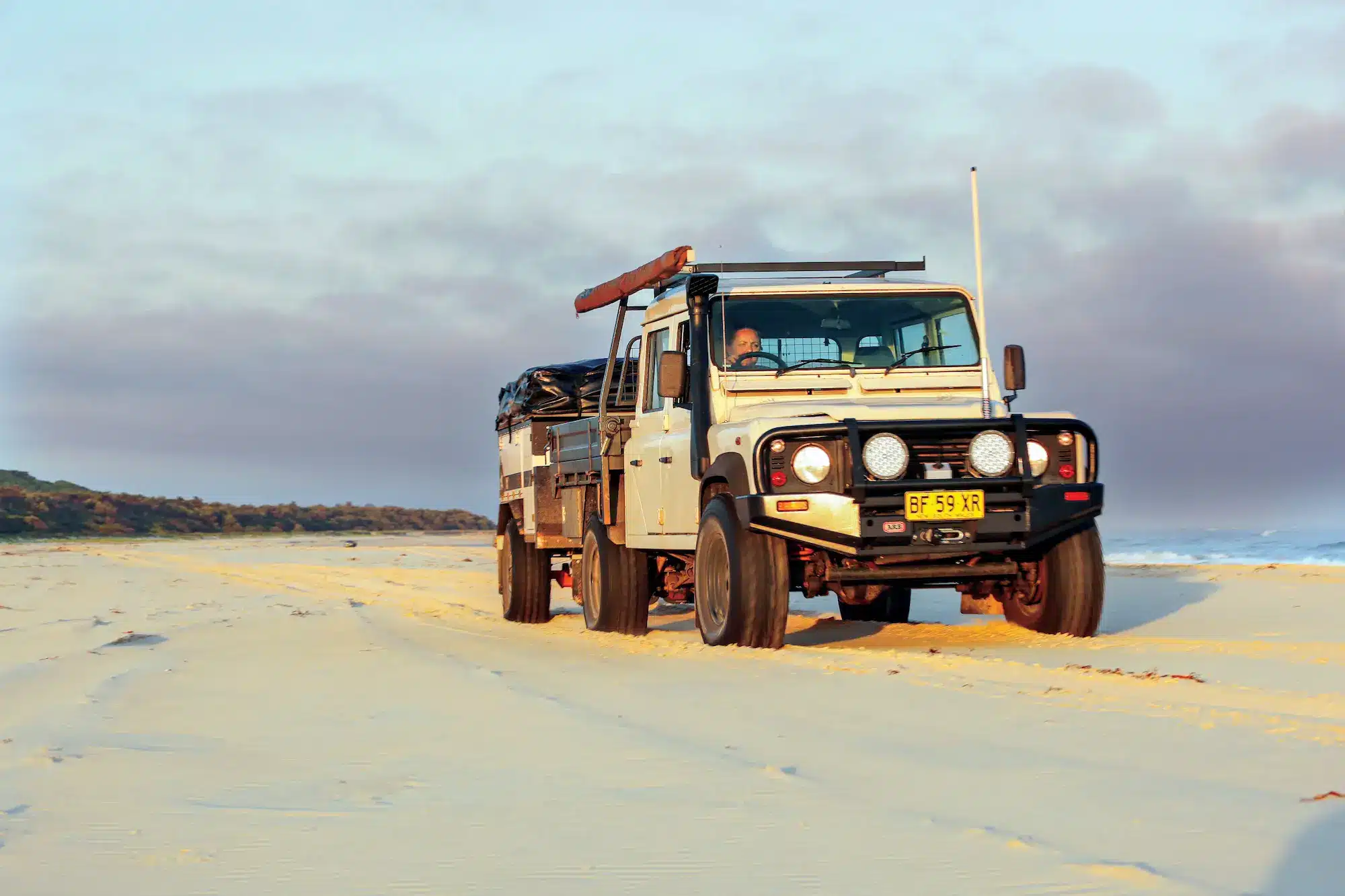
In nearly all off-road situations, torque trumps horsepower. Not so on sand. Wheel speed gives you the highest chance of maintaining forward momentum. For that you want plenty of ponies under the right boot. To be honest, this is only really a problem for older diesels as modern units are quite high-revving and have enough acceleration to keep you moving forward. When you’re climbing a dune, the key is to maintain just enough momentum to crest over the top. Have too little and you won’t make the climb. Have too much and you risk launching your 4X4 into the air or carrying too much speed into unseen obstacles. People have tragically lost their lives after flying over the top of a dune into an on-coming vehicle. The chances of becoming stuck increase when heading uphill on sand, so maintaining the right balance of speed and momentum is critical.
Have a sand flag fitted when dune driving. These are usually hi-vis orange flags attached to a long pole on your bullbar. You can make one yourself for a few bucks or buy one from any 4X4 store. Even if the driver on the other side of the dune doesn’t have one, you’ll at least be visible.
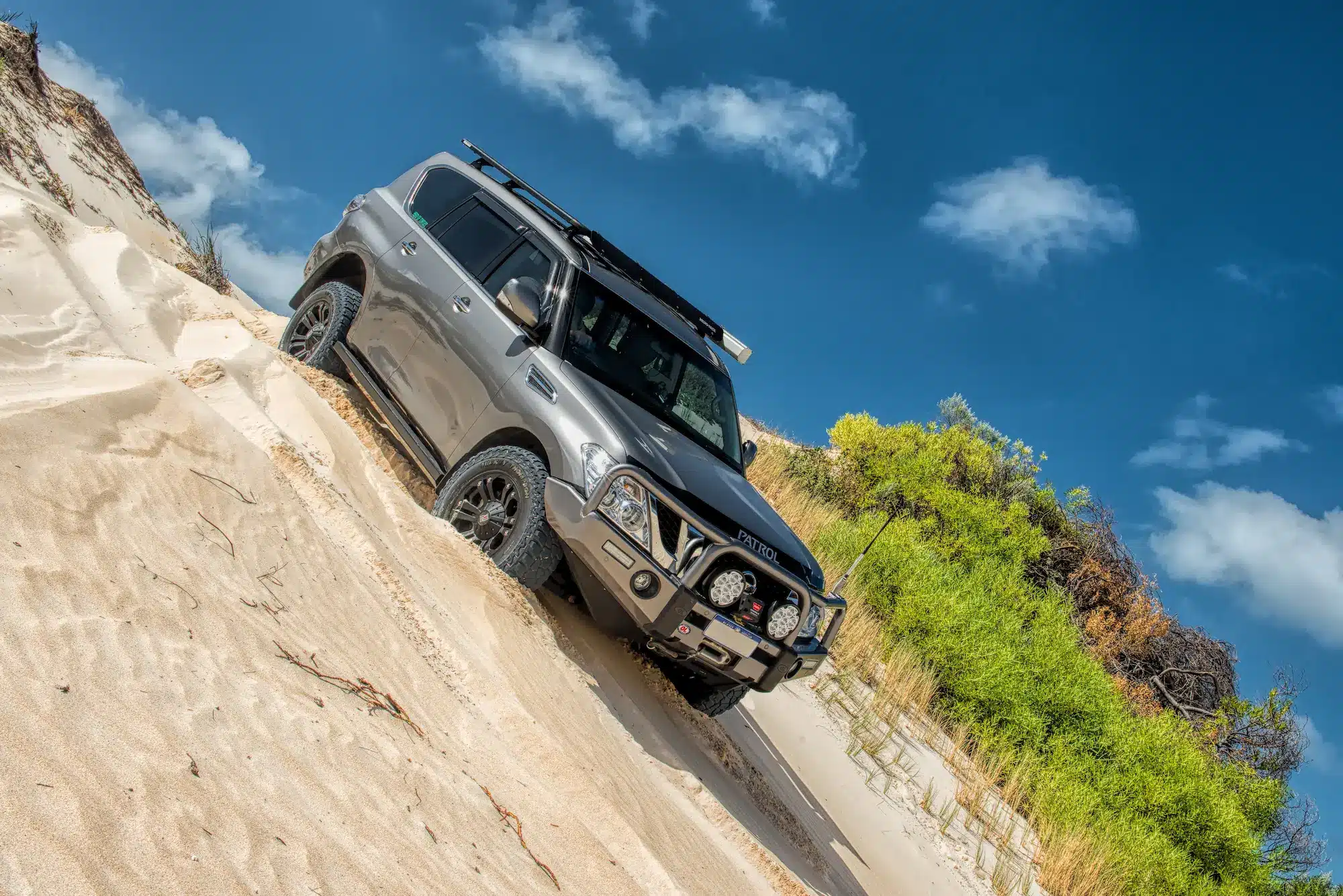
Say you’re attempting to climb a dune. You don’t make it and need to head back down to the base to give it another attempt. Do NOT try to turn around! The correct procedure is to reverse back down in a straight line. If you try to turn around, your low-side springs will be compressed while your high-side springs will be trying to unload – the result being a high possibility of a rollover.
Always avoid travelling side-on when you’re on a dune. Sand shifts, and what you thought was a nice gradual slope can overcome your vehicle’s centre of gravity in no time. Straight up and straight down the dunes, folks. Don’t become the cautionary tale. Additionally, remember that driving vehicles on dunes can damage flora and fauna, so always stick to designated tracks and avoid sensitive areas.
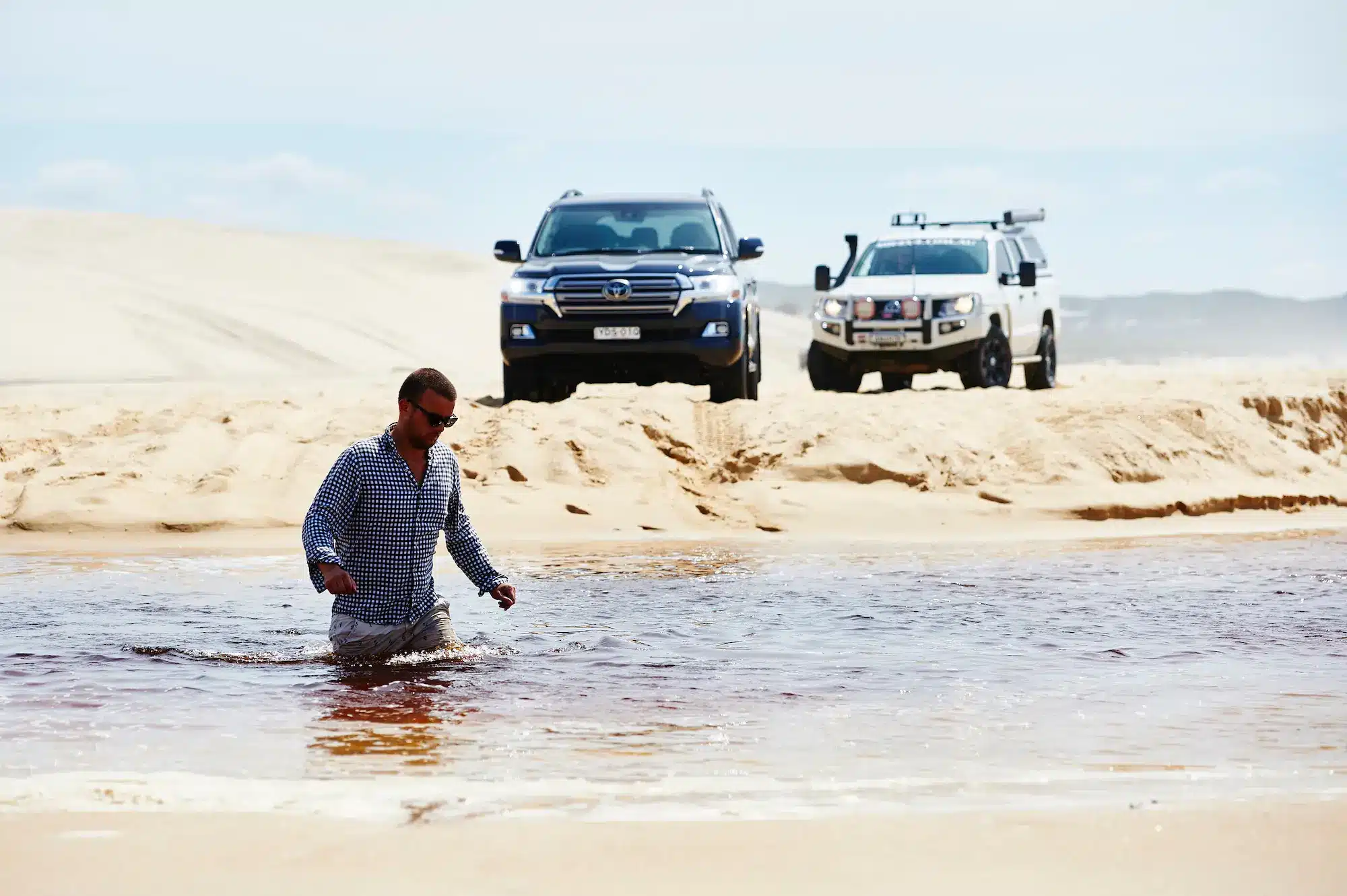
Quite often on beach drives you will come across tidal run-out creeks that you will have to cross. These may seem shallow and easily tackled but they can be deceptive. Quite often they will be moving incredibly quickly, and they can conceal deep holes along the base of the creek. Always walk them first and make sure you mark out any suspicious areas. Also, the drop down into these crossings can be notoriously steep.
We’ve probably all seen those pics online of people who have tried to cross these things without taking the proper precautions first. They end up with their bullbars buried in the sandy base of the creek while that salt water washes over their bonnet, engine bay and lights – causing no end of havoc. Take your time here, guys.
The thing about beaches is they’re all the more fun to visit when the sun’s out, there’s not a cloud in the sky and the temperature is warm. The thing is, when you’re driving down the beach with the noon-sun high overhead, it becomes nearly impossible to spot washouts and erosion ditches until you’re nearly on top of them. If you can imagine plunging into a three-foot deep hole at 80km/h you can probably work out that neither your back nor your suspension will be too happy about it. The first way to avoid this is kinda obvious: Slow down. Almost every beach in Australia has speed limits, and the police are active in popular spots in enforcing them.
The second thing is to get some quality sunnies, preferably polarised. These highlight the gradations in the sand much more effectively as they remove the sun’s glare, giving you time to both see and react to any sharp changes in the terrain up ahead.

Steering on sand is as much about throttle input as it is about turning the wheel. It’s a bit disconcerting when you’re starting out – you turn the wheel to the right and your vehicle wants to keep on going forward. It eventually catches a ridge, and out of nowhere your 4X4 twitches to the right suddenly. By applying a little throttle as you turn in, you’re encouraging your vehicle to head in the direction you want … rather than letting the soft stuff dictate when you’ll actually turn.
While we’re on the subject of turning, make sure you only apply smooth input into the steering wheel too. If you jerk the wheels too sharply, the low tyre pressures you’re running can cause the bead of the tyre to roll off the rim. While this is not the end of the world, it is a pain in the backside. To reseat the bead, clean all the sand out of the rim and tyre and wrap a ratchet strap around the circumference of the tyre before attaching a compressor and reinflating. There’ll be an audible ‘pop’ when the bead reseats. Speaking of compressors …
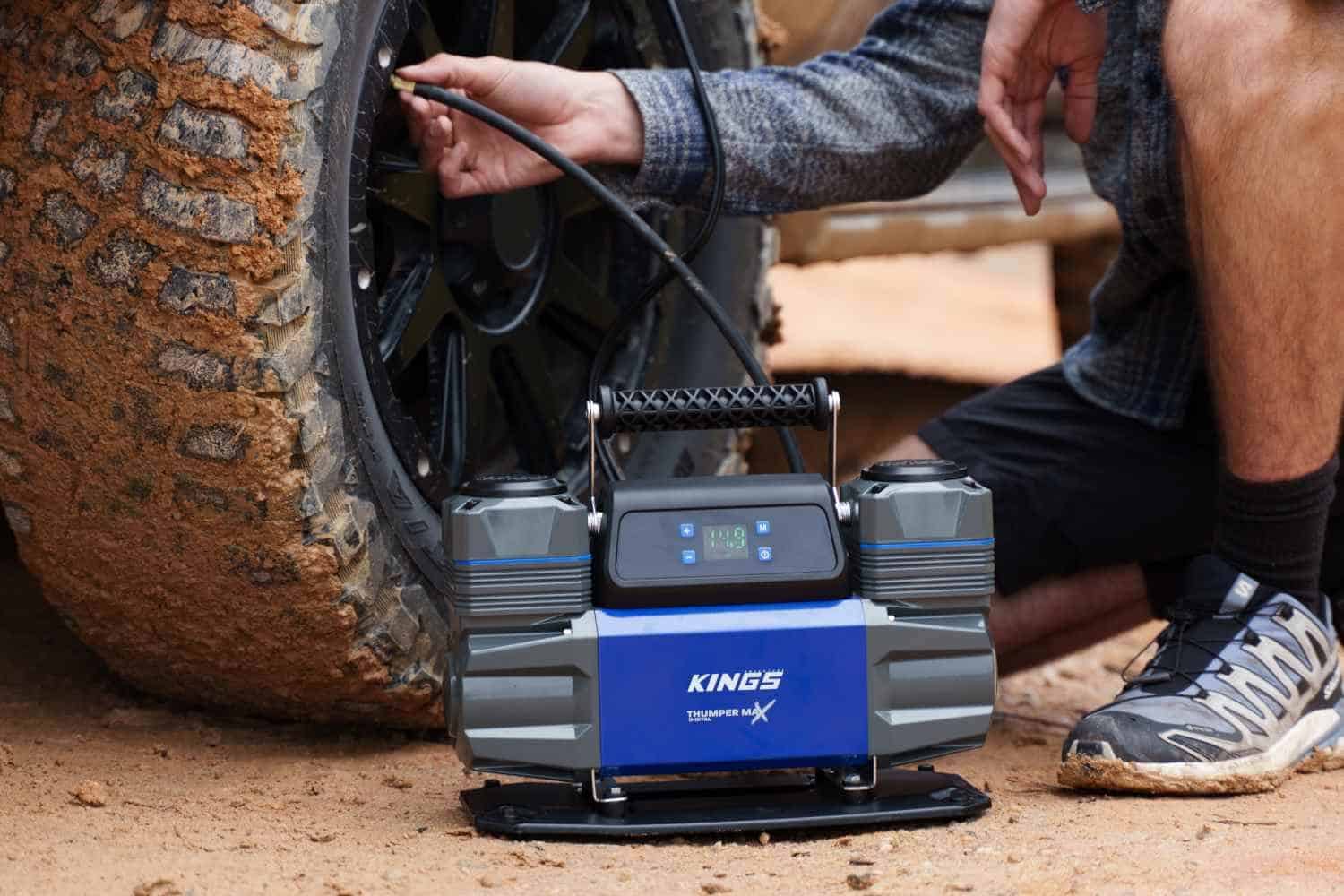
Once you’ve finished playing on the beach, you’re going to need a means of replacing the air in your tyres … that air you dumped at the start of your drive. There’s no shortage of 12V compressors on the market which will have you back up at road pressures in about the same time it takes for a quick cuppa, and they’re incredibly affordable these days too. Not only that, they’re excellent for blowing up inflatable beach toys, air mattresses, the kids’ footy …
Oh, and don’t forget once you’re home to give your fourby a good wash. Sand and salt will rust out your vehicle quicker than anything, so make sure you don’t overlook the underbody. Those garden sprinklers that move along a track are perfect for this. Set up the track under your 4X4, turn on the hose for half an hour, and you’re set.
The science of sand driving in your 4WD
This article contains affiliate links to some of the featured products. We may receive a commission for purchases made through these links